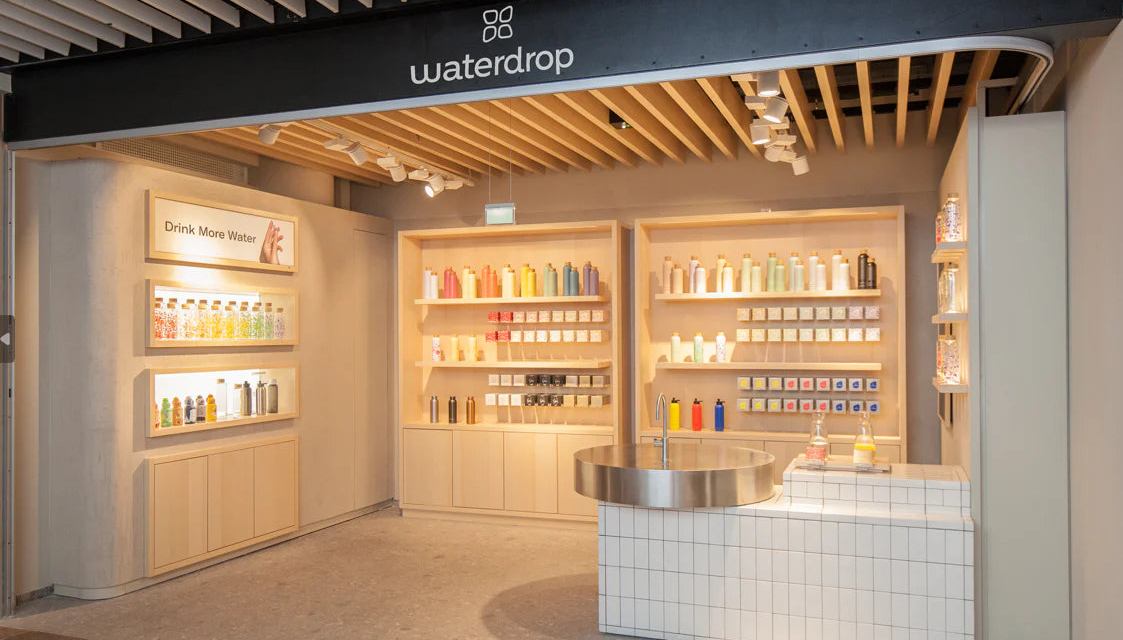Inside Waterdrop’s micro-retail strategy

When it comes to its brick-and-mortar expansion, Vienna-based hydration brand Waterdrop is starting small.
The company — which sells drinkware and dissolvable cubes that flavor water — is investing in small-format retail stores that allows it to enter new markets without the cost and lease commitment of a traditional location. The company has two micro-stores in the U.S. in Miami and Los Angeles, the latter of which was opened in September and is only 310 square feet. This year, the company plans to open five more micro-stores overseas in markets like France and Germany.
Waterdrop entered the U.S. market back in 2021. It initially opened kiosks, which are about 150 square feet, to test out different markets. The company currently has 12 micro-retail stores, which are typically less than 1,000 square feet, and 26 kiosks in total.
Hanna Martetschlaeger, head of retail at Waterdrop, said micro-stores are the next step after kiosks, when the brand gets a better sense that its products are resonating well with shoppers. “We typically like to try to start out with a kiosk — low risk, low cost investment,” Martetschlaeger said. “When you then get your first positive signals from a kiosk location. It allows you to then kind of move broader and invest into bigger locations.”
Founded in 2017, Waterdrop offers 20 flavors for its patented flavored drink cubes and over 100 drinkware items. Apart from small-format stores and kiosks, the company sells its products through its direct-to-consumer website, Amazon and wholesalers like Walmart and Target. The brand brings in over $100 million in annual revenue about 10% of which comes from its kiosks and stores.
It’s no surprise that physical stores are alluring for brands as they would have more control over presentation and customer experience. However, traditional stores are often expensive and require five or so years of commitment, Martetschlaeger said. Small-format stores offer the benefits of a physical location but a shorter lease commitment of about one to three years, she added.
Martetschlaeger said that Waterdrop is drawn to the low rent and short lease of micro-locations. The micro-stores also give the company access to high-traffic malls and urban areas where its target audience spend their time in. The intimate setting of a micro-store has also helped convert store visitors into online customers.
“You will get the full experience as a customer for a brand that you will never get at a retailer when you have your product on a shelf next to 20, 30, 50 other brands,” Martetschlaeger said. “What I love about the stores as well, and I think that it has really helped us with our brand awareness and building a loyal customer base, is that you can actually try the product before purchasing.”
Waterdrop offers free samples in stores. The company also hosts events in its retail spaces, which allows Waterdrop to connect with the local community. For example, in November, it hosted a launch event for its long-awaited cola flavor in its flagship location in Minneapolis.
Rebekah Kondrat, founder of Kondrat Retail, said that when CPG brands rely solely on wholesalers, they often don’t have control over how their products are merchandised in stores.
“There’s just more control that the brands have over where their products are, when they’re getting placed out and how they’re getting rotated through,” Kondrat said. Additionally, having a micro-store helps brands gain more insight on consumer behaviors. Having a micro-store also gives brands access to high traffic areas without the hefty cost of rent.
Small-format stores, however, aren’t immune to the challenges of brick-and-mortar retail. For example, brands still have to figure out the logistics around shipping and product replenishment. Brands also have to pay and train their in-store staff members.
Martetschlaeger said that the company plans to open more micro-stores in the U.S. but Waterdrop’s current priority is managing its existing stores in the country before scaling. She said it typically takes six to 12 months of planning before executing and opening a new store.
“At the moment we’re really focused on optimizing our current operations for our current stores,” Martetschlaeger said. “It’s safe to say the market is huge for retail expansion. So there are so many malls and so many interesting cities for us to be in.”

